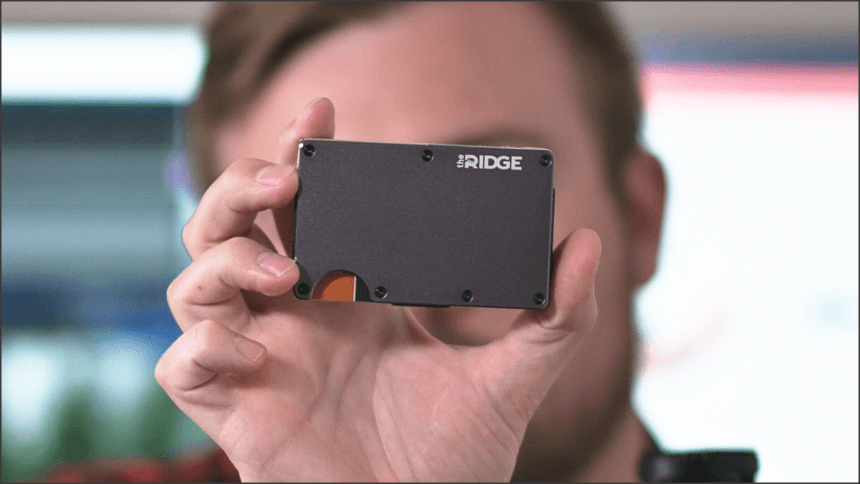📑Table of Contents:
- What is a 9-Figure Exit in Venture Capital?
- Why Do 9-Figure Exits Seem Impressive?
- The Purpose of This Article
- The Real Breakdown of a $100M Exit
- The Reality of VC-Backed Startups
- The Bootstrapped Founder’s Alternative
- Market Perspective: Industry & Competitor Benchmarks
- The Downsides of a 9-Figure Exit
- Notable 9-Figure Exits & Their Outcomes
- The Real “9-Figure” Number to Focus On
When a VC-backed founder suddenly becomes a “thought leader” after their so-called “9-figure exit,” here’s what they conveniently leave out:

What is a 9-Figure Exit in Venture Capital?
A 9-figure exit refers to a startup being acquired or going public for a valuation between $100 million and $999 million. These exits are often seen as major wins in the startup ecosystem, especially compared to smaller acquisitions.
Why Do 9-Figure Exits Seem Impressive?
At first glance, a nine-figure deal suggests massive success—founders cashing out, investors securing solid returns, and employees benefiting from equity payouts. Media coverage often hypes these deals, making them appear like game-changing milestones.
The Purpose of This Article
But are 9-figure exits always as big as they seem? This article will analyze whether these deals truly deliver the expected financial rewards, how they compare to billion-dollar unicorn exits, and why some investors and founders might actually be disappointed despite a high valuation.
The Real Breakdown of a $100M Exit
On the surface, a nine-figure exit sounds like a dream come true. But let’s dissect what happens behind closed doors:
- Total acquisition price: $100M
- Payback to Series A/B investors: -$63M
- Seed investor returns: -$10M
- Remaining for founders (split among 3 co-founders): $27M → $9M each
- Capital gains tax (37%): -$3.3M per founder
- Net amount pre-debt: $5.7M
- Subtract personal loans (from early years with no salary): -$500K
- Final amount received: $4.8M
After nearly a decade of grueling work, dilution, and stress, a $100M exit turned into less than $5M per founder. It’s not exactly the glamorous payday many assume.
The Reality of VC-Backed Startups
VC funding isn’t free money—it’s a high-stakes game with serious trade-offs. Here’s what founders sign up for:
- 7+ years of sacrifice—founders often work 80+ hour weeks
- 65%+ dilution—founders lose majority control of their company
- Board control—investors dictate major decisions
- Salary constraints—low or no salary for years
- Endless fundraising—always chasing the next round
- Huge burn rates—$800K+ per month to stay afloat
- Team bloat—managing 100+ employees, hiring and firing constantly
- High stress—board meetings, investor pressure, unrealistic growth targets
And after all that? If they don’t hit unicorn status, most end up with less money, more stress, and no control.
The Bootstrapped Founder’s Alternative
Now, let’s compare this to a founder who skips VC and builds a business using customer revenue instead:
- 100% ownership—retain full control of the company
- $3M-$5M ARR (Annual Recurring Revenue)—steady, profitable growth
- $1M-$3M/year personal earnings—without investor interference
- Lean teams (<10 people)—low overhead, high efficiency
- Self-funded with customer money—no reliance on outside capital
- Unit economics first—profitability over artificial growth
- Exit options remain flexible—$30M-$40M exits are always available
- Total freedom—no board, no investors, no dilution
Market Perspective: Industry & Competitor Benchmarks
Are 9-Figure Exits Common in Certain Industries?
- Breakdown of industries where 9-figure exits are most frequent (e.g., SaaS, biotech, fintech, e-commerce).
- Factors that contribute to these industries having more 9-figure exits (e.g., high growth potential, strong M&A activity).
- Recent examples of notable 9-figure exits in these sectors.
How Do 9-Figure Exits Compare to Industry Giants?
- Comparison with billion-dollar unicorn exits and IPOs.
- Do 9-figure exits signal success or early sellouts compared to their competitors?
- How major tech giants (Amazon, Google, Meta) approach acquisitions in the 9-figure range.
Recent M&A Trends and 9-Figure Deals
- Analysis of mergers and acquisitions trends in recent years.
- Are companies buying more startups at the 9-figure level, or are they aiming for bigger deals?
- How macroeconomic conditions (interest rates, market downturns) affect the frequency of 9-figure exits.
The Downsides of a 9-Figure Exit
Why Some Investors and Founders May Be Disappointed
- A 9-figure exit may seem large but could be underwhelming for certain investors.
- Venture capitalists typically seek 10x+ returns, and a $100M–$999M exit may not provide that.
- Founders with smaller equity stakes may walk away with far less than expected after dilution and investor payouts.
Opportunity Cost: Could the Startup Have Grown Bigger?
- Some startups exit early due to acquisition offers, but could they have scaled to a billion-dollar valuation?
- Case studies of companies that sold too soon vs. those that held out for greater success.
- The risk of missing out on future market dominance by exiting prematurely.
Pressure from Investors to Sell vs. Scaling Further
- VCs may push for an exit to realize returns quickly, even if the company has the potential for further growth.
- Founders often face a tension between scaling further and meeting investor expectations.
- The impact of funding cycles and the need for liquidity events in venture capital.
Notable 9-Figure Exits & Their Outcomes
Real-World Case Studies of 9-Figure Exits
- Instagram’s $1B Exit to Facebook (Almost a 9-Figure Deal) – Initially viewed as a massive acquisition, but later, many argued it was undervalued considering Instagram’s long-term success.
- Ring’s $1B Sale to Amazon – A security startup that gained mainstream traction, but did the founder leave money on the table by selling too soon?
- Oculus VR’s $2B Acquisition by Meta – Though slightly over nine figures, many investors saw it as a quick exit before virtual reality had a chance to explore.
Did These Exits Lead to Success, Struggle, or Regret?
- Massive Success: Some founders and investors walked away with significant returns and reinvested in new ventures.
- Struggles: Employees and early investors often faced equity dilution, reducing their actual payout.
- Regret: Some companies that sold for nine figures later saw their acquirers scale them into multi-billion-dollar giants, making their exit look premature.
The Real “9-Figure” Number to Focus On
Here’s the kicker: 99% of VC-backed startups don’t even make it to an exit. They fail, get acquired, or dissolve under pressure from investors.
So instead of chasing a mythical 9-figure exit that leaves you with less than expected, build for freedom, not for exits. Bootstrapped founders may not get the hype, but they own their success, keep their profits, and control their destiny.





